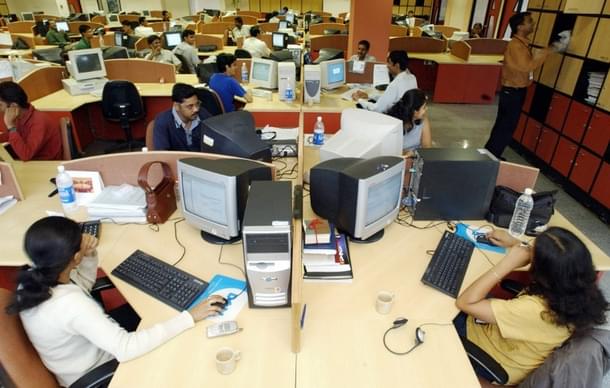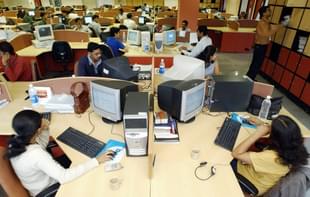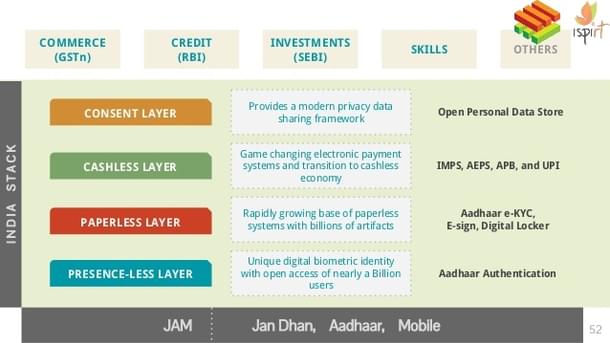Ideas
Software As An Instrument Of Soft Power
Sanjay Anandaram
Dec 09, 2016, 08:03 PM | Updated 08:03 PM IST
Save & read from anywhere!
Bookmark stories for easy access on any device or the Swarajya app.


“When one country gets other countries to want what it wants – might be called co-optive or soft power in contrast with the hard or command power of ordering others to do what it wants. Soft power lies in a country’s attractiveness and comes from three resources: its culture (in places where it is attractive to others), its political values (when it lives up to them at home and abroad), and its foreign policies (when they are seen as legitimate and having moral authority).” – Joseph Nye, Harvard Political Scientist in “Bound to Lead: The Changing Nature of American Power (1990)”
India has appreciable soft power from spiritual philosophies to Bollywood movies to food to yoga to cultural imprints in South East Asia. Not to forget India as the clichéd “world’s largest democracy”, democratic institutions and pluralistic society. Or does it? The 2015 “The Soft Power 30” a global ranking of soft power by ComResGlobal doesn’t seem to think so – India isn’t in the top 30 countries with soft power.
India’s traditional levers of soft power haven’t translated into actionable foreign policy that have generated impactful political-economic leverage for India. For example, 15 million foreign tourists visited tiny Singapore in 2015 compared to about 8 million to India. It is all very well for the UN to celebrate 21 June as World Yoga Day but the US is the leading yoga market in the world with over $27 billion in sales of yoga products with over 36 million practitioners.
So what can be done if the traditional sources of soft power aren’t generating the desired results? It is time to deploy newer sources of soft power! Since 2014, a newly assertive and confident India has championed a foreign policy focused on securing India’s place at the table of world powers. In the 21st century where knowledge and technology are expected to play a major role in shaping the destinies of countries, India can and should play a major role. If there’s one industry where India and Indians are globally recognised, respected and regarded, it is the IT/software industry. Software is embedded into every single activity – healthcare, education, financial services, travel, entertainment and manufacturing – and this trend will only increase.
Indians are at the helm of affairs at global technology companies like Google and Facebook, and are among the most regarded entrepreneurs and investors in Silicon Valley and elsewhere. Large numbers of young educated, aware, aspirational Indians are employed in the Indian IT industry, they are exposed to global customers and practices; the Indian system can generate, indeed is, generating many more trained and deployable high-quality technical and managerial talent. Indian software start-ups and entrepreneurs are rapidly emerging and beginning to make their mark globally. The reduced costs of technology, of marketing, of deploying solutions, of providing customer support, all directly from India are all highly advantageous to Indian companies. Software is a very high value-added product too with relatively low investment. In every other industry, India is the world’s top exporter of primary goods such as rice, beef, precious stones and even hair but not the one who captures the real end-product value. And software is very environment-friendly! China will find it hard to emulate what India has achieved and can achieve in software.
So, can India use its renowned prowess in software to influence foreign policy gainfully?
Indeed it can! Here are three strategies that need to be interwoven into India’s foreign policy thrust:
a) Advocacy: An impoverished India in the 1950s championed the Non-Aligned Movement (NAM) that got various “Third World” countries together to be equidistant from the USSR and the USA, the two super powers of the time. Never mind that the only two countries that were genuinely non-aligned were the two super powers themselves! India in the 21st century can regain its position as the leader of emerging economies by advocating a “Digital NAM” aka Net-Neutrality. This would be legitimately and morally authoritative coming from India. With the leading global technology players being locked out of China, India and other emerging markets are the subject of their affections. Here’s an opportunity for India to seize and lead from the front.
b) “Governance for hire”: India is the only country in the world that has built, ground up, the incredible “India Stack”: a set of software modules, interfaces governance mechanisms, security, legal and business workflows, and audit processes that allow people to participate in any service from anywhere, digitally pay for the services consumed, exchange documents digitally, and a private data store where data can be stored, shared, with consent. Digital India is being built on this platform as the below illustration shows.

This public good (yes!), has been built due to the efforts of some of the most talented and qualified people in the world. Non-profit advocacy groups like iSpirt are playing a stellar role in educating and transforming thinking in the corridors of power. And owned entirely by India. The scale, complexity, deployment scenarios, ease of use, security and various other parameters are unparalleled anywhere in the world. Now, what if India were to offer this entire stack to countries in say, Africa, Middle East, Central, South and South East Asia and help them run their governance for their people? How powerful would that be?
No different from say, the US doing a technology transfer, licensing, training and sharing arrangement with India.
c) Software as part of trade deals: India through ITEC helps a large number of countries in Asia and Africa. Education, engineering and infrastructure services are major areas of investment. There’s no reason why software cannot be a part of this programme. Indian software products – from healthcare to financial services to customer support to retail to supply chain management to education – can and should be part of bilateral and regional trade deals. Indian companies can train, deploy, and support other countries offer better services to their citizens with Indian software.
India with its legacy, capability, capacity and brand recognition is uniquely placed to become a software power; new thinking and a new approach are required to capture this unique opportunity. India has the moral and legitimate authority to lead this initiative for the entire emerging world. India has been a soft power. It is time to become a software power.
Sanjay Anandaram has over 30 years of experience as a member of India’s technology-entrepreneur-investment-innovation ecosystem. He is a keen observer of geopolitics especially as it relates to technology and is also the co-founder of NICEorg that aims to catalyze Indian cultural entrepreneurship





